BC Robotics
Browse categories
- New Additions
- Shop
- On Sale / Clearance
- Popular Categories
- ArduinoArduino is the most popular open source microcontroller platform on the market. These easy to program devices can read sensors, control relays, light up LEDs, and even talk to one another. Their ability to interact with the real world by way of sensors and other electronics makes them ideal for automation such as watering a plant when it is dry, reading the weather, or controlling lights when it gets dark – the possibilities are endless. We carry a variety of Arduino compatible microcontrollers from several manufacturers, each with their own specific strengths and purposes. To further specialize your microcontroller, we carry a large selection of daughter boards (shields) which can add powerful sensors, GPS, or even LCD screens to your project! Just getting started with microcontrollers? We carry a variety of Arduino starter kits to get you reading sensors and blinking lights as easily as quickly as possible!
- BBC micro:bitThe BBC micro:bit is a pocket-sized computer designed for beginners in electronics and coding. The micro:bit makes getting into these often daunting fields as easy as possible. Programming the micro:bit V2 can be done by computer or by their intuitive app available for Android and iOS devices. Code can be designed using a drag and drop interface in the Blocks editor, Javascript, or Python.
- ESP8266 & ESP32The ESP8266 and ESP32 microcontrollers from Espressif are powerful, inexpensive, and feature integrated WiFi connectivity. These are ideal for IoT applications. We offer a variety of different ESP8266 and ESP32 modules for different skill levels.
- FeatherFeather is a flexible and powerful family of microcontroller main-boards (Feathers) and daughter-boards (Wings) designed with portability in mind. All Feathers have integrated battery connectors (and most have built in lipo chargers) The Feather form factor is not locked to a specific chipset or programming language. Feathers are available with a variety of chipsets and on-board features. Most Feathers and FeatherWings have example code and libraries written in Arduino C/C++ and CircuitPython.
- Makey MakeyThe Makey Makey kit is a electronics kit designed for beginners. It explores the concepts of creating circuits through everyday items. When plugged into a computer you can use the Makey Makey to make anything into a keyboard or mouse. No programming required! Projects like a Banana Drum Set, Cat Detector, Musical Stairs, and countless others are easier than you think! We carry the Makey Makey Classic Kit – a starter kit for the Makey Makey – along with extra alligator clips, copper conductive tape, and replacement cables.
- Raspberry PiThe Raspberry Pi was first introduced in early 2012 as a simple, low cost, computer fit onto a circuit board roughly the size of a credit card. The idea was to use this low cost computer to promote teaching of computer science in schools but it has grown to be so much more! Since its release, well over 30 million of these little computers have been sold. We have carried the Raspberry Pi in Canada since it first became available and have watched as the Pi has morphed into a complete development platform with powerful single-board computers, cameras, touchscreens, and other accessories. Its multitude of inputs and outputs for electronics and computer peripherals and its impressive computing power mean it can be used to make just about anything you can imagine. The newest and most powerful version, the Raspberry Pi 4, is now available!
- Popular Brands
- AdafruitAdafruit was founded in 2005 by MIT engineer, Limor “Ladyada” Fried. Her goal was to create the best place online for learning electronics and making the best designed products for makers of all ages and skill levels. In the last 10 years, Adafruit has grown to over 100+ employees in the heart of NYC with a 50,000+ sq ft. factory.
- ArduinoArduino is an ever growing platform used by some of the most popular microcontrollers out there. For many of us, this is where it all started – the Arduino was (and still is today) a pioneer when it comes to making programming hardware easy and accessible. We have one of the largest selections of Arduino and Arduino accessories in Canada. These range from basic Arduino Uno, to Cellular and WiFi connected devices perfect for the Internet of Things, and all the accessories needed to get them running!
- Micro:bitMicro:bit Educational Foundation are the manufacturers of the popular BBC micro:bit; a pocket-sized computer designed for beginners in electronics and coding. The micro:bit makes getting into these often daunting fields as easy as possible. Programming the micro:bit V2 can be done by computer or by their intuitive app available for Android and iOS devices. Code can be designed using a drag and drop interface in the Blocks editor, Javascript, or Python.
- BC RoboticsIn addition to stocking 2000+ unique items, we also manufacture our own accessories right here at BC Robotics. In 2014 we began developing our own widgets and add-ons for Arduino, Raspberry Pi, and general prototyping. This has now grown to over 80 different SKUs. Our boards are assembled in-house with top quality components. Many feature detailed tutorials or project guides to get you up and running as quickly as possible!
- Raspberry Pi
- SparkFunSince 2003, SparkFun has been helping turn ideas into reality – whether you’re creating a smart weather station, exploring the frontier of machine learning, building a robot for school or prototyping your first (or tenth) product. No matter your vision or skill level, our open source components, resources and online tutorials are designed to broaden access to innovative technology and make the road to a finished project shorter. We’re here to help you start something.
- Frequently Asked Questions
- My Account
- Wishlist
- Cart
Configuring Arduino IDE for the ESP8266
PRODUCT TUTORIAL
- Chris @ BCR
- March 2, 2023
- 3:45 pm
- One Comment
In this tutorial short, we will guide you through the process of setting up the Arduino IDE to program the ESP8266 series of boards. The ESP8266 is a popular Wi-Fi enabled microcontroller that can be used for a wide range of projects. By the end of this tutorial, you will have the Arduino IDE set up so you can begin programming your own ESP8266 projects.

Step 1: Install The Arduino IDE
Before we start, we need to get the Arduino IDE (Integrated Development Environment) installed. We are using version 1.8.19 for this tutorial, however if you are using version 2.0 or newer, the instructions remain the same, but the dialogues many look a little different.
The Arduino IDE can be downloaded from Arduino’s website: https://www.arduino.cc/en/software
Step 2 - Arduino Preferences
Once it is installed, we need to add an additional Board Manager URL to the Arduino Board Manager. Basically, we are going to tell the Arduino Board Manager to look at an additional location so that the program can automatically install the ESP8266 support – don’t worry, it sounds much more complicated than it is.
Start by opening the Arduino IDE. In the top menu navigate to: File -> Preferences. This will open the Preference dialogue. Click the little window button (highlighted in red in the image) to add additional URLs.
Step 3 - Board Manager URLs
On opening the Additional Board Manager URL window, you will see a small text box with 1 (or more) addresses. Don’t remove anything! This is just a simple list of addresses, one per line. On a new line add the following URL:
http://arduino.esp8266.com/stable/package_esp8266com_index.json
Once that has been added, Click “OK” and close the Preferences window.
Step 7 - ESP8266 Configuration Settings
Unlike plain Arduinos, there are quite a few settings that can be configured with the ESP8266. These settings are uploaded with your code. From here you can set the Flash memory size, overclock (or underclock) the CPU, and a variety of other settings. For the most part, basic projects can just use the default settings.
Step 8 - Moving Forwards
Due to the sheer number of different boards using the ESP8266, the next steps will be specific to the board you are working with. Some may require additional components and special cables to program while others may be as simple as plugging in a USB cable. For specific instructions on each board, be sure to check out the manufacturer’s tutorial!

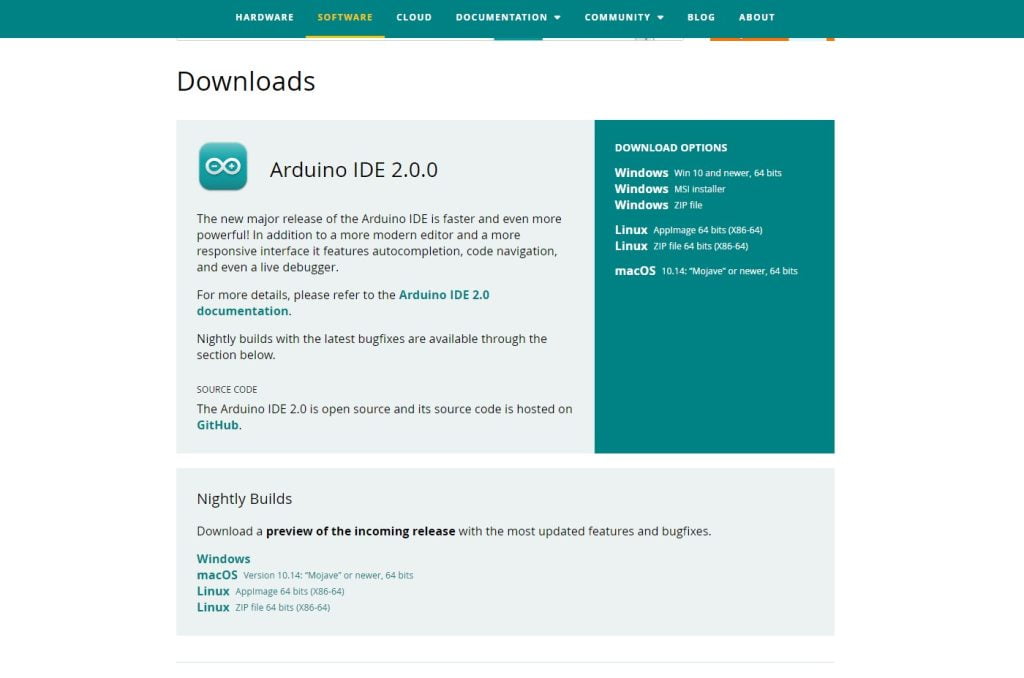
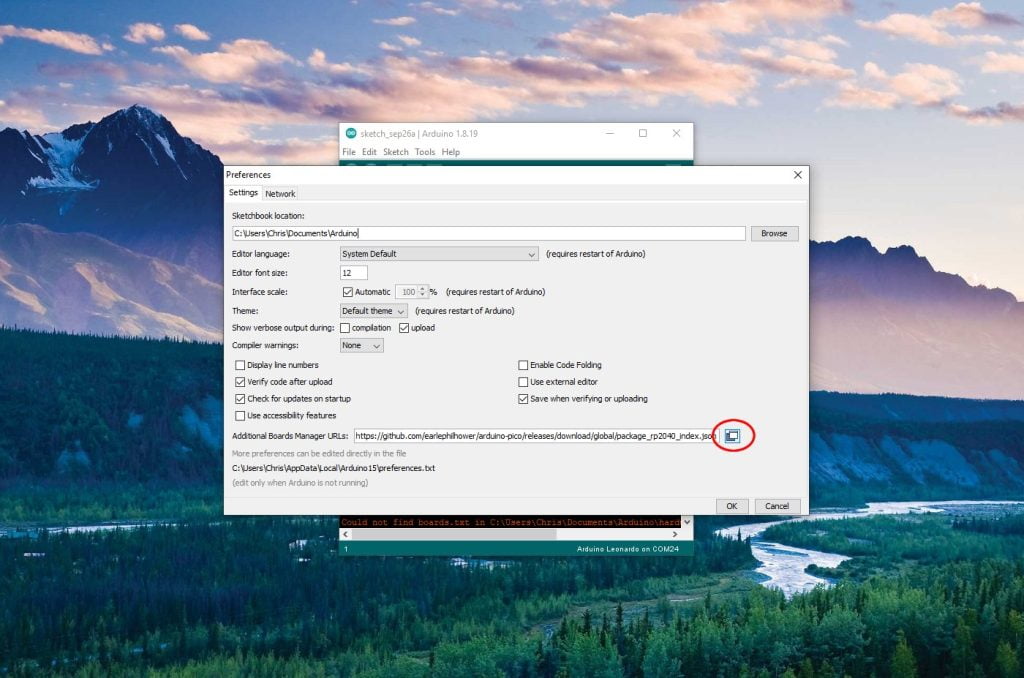
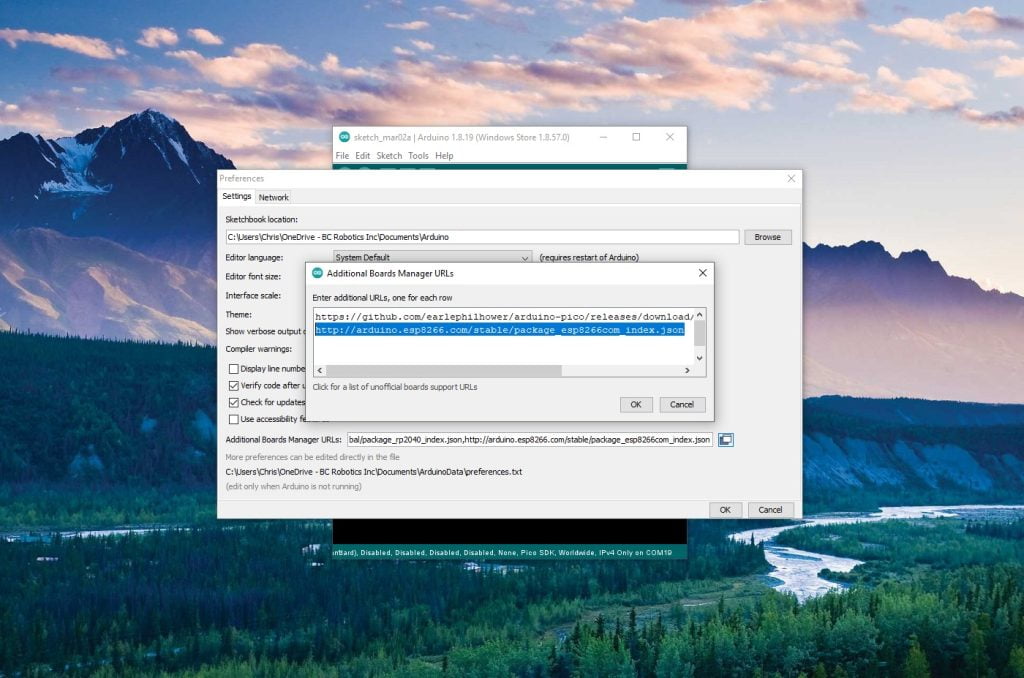
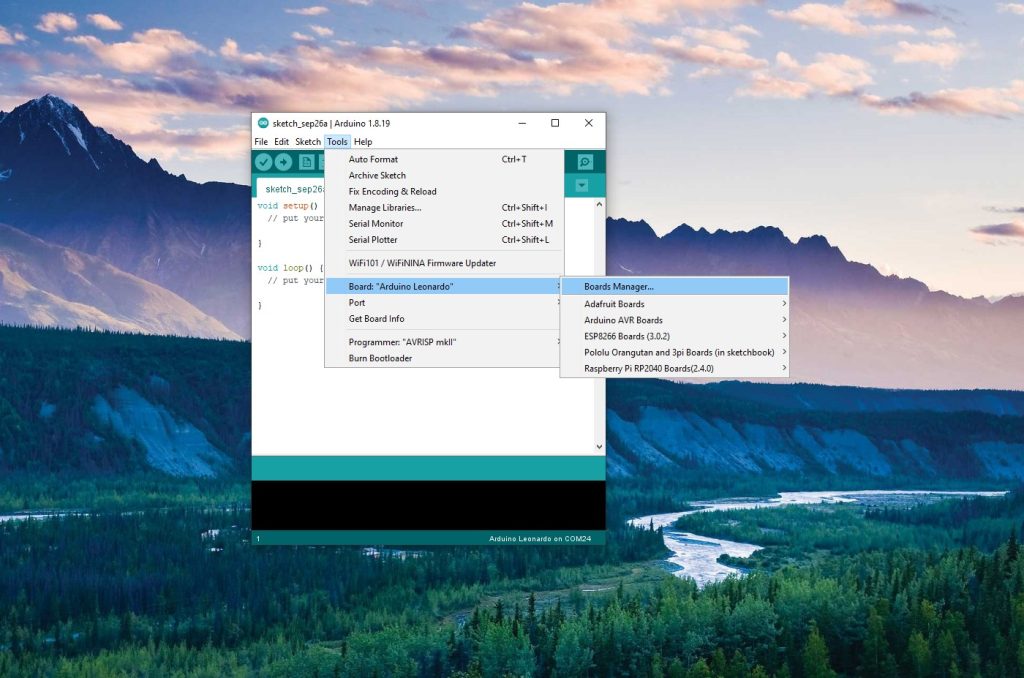

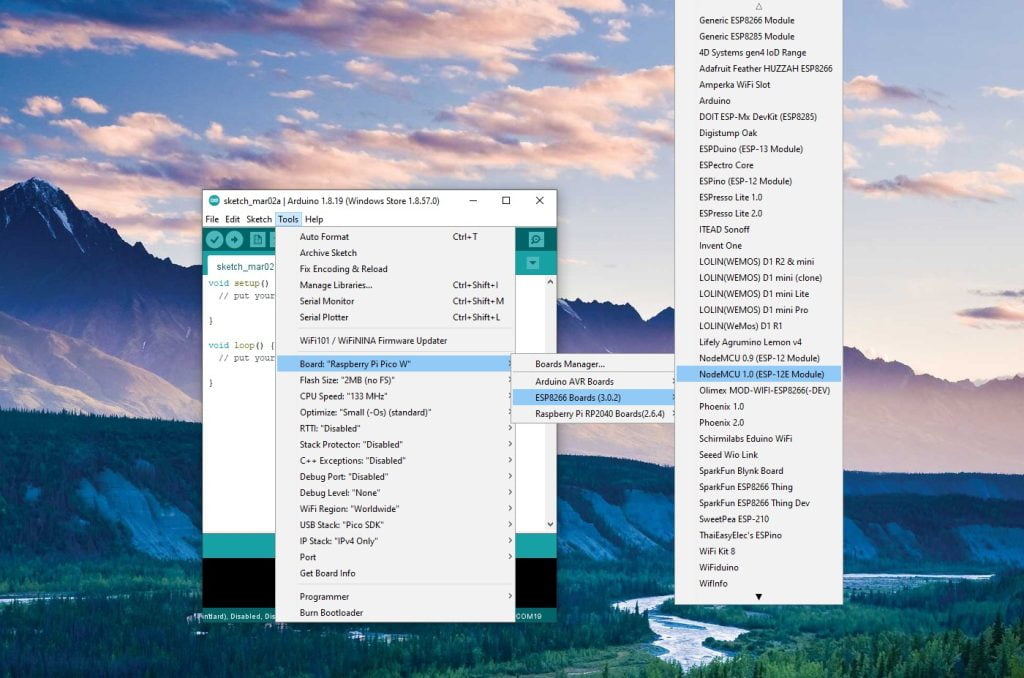
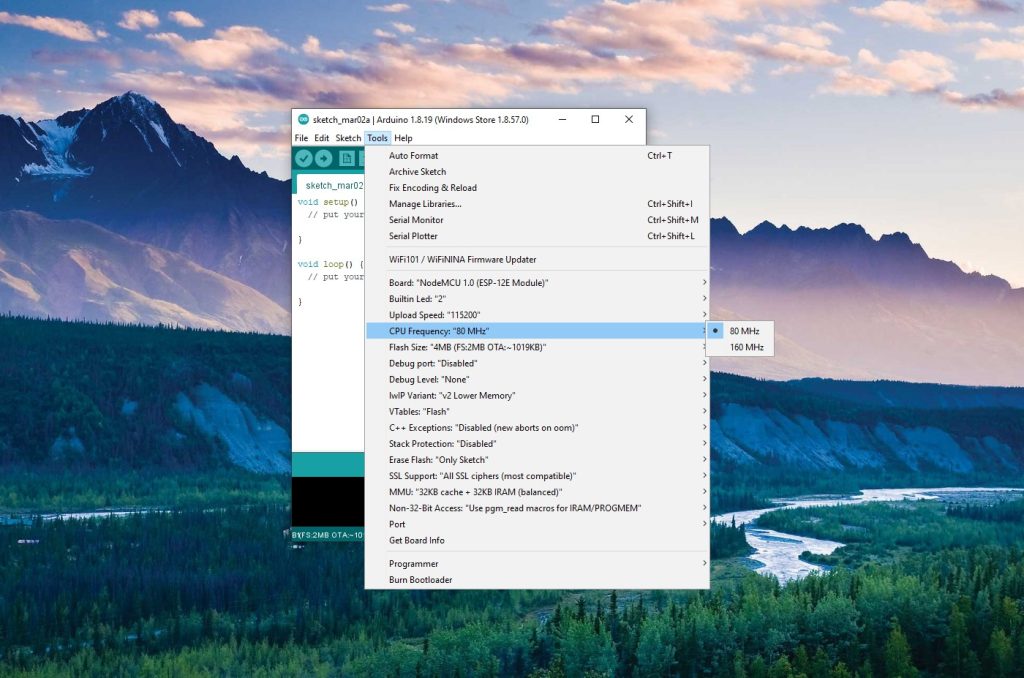
One thought on “Configuring Arduino IDE for the ESP8266”
JK
Is there a tutorial or schematic diagram for use with your ESP8266 1 channel relay module as shown in the image?